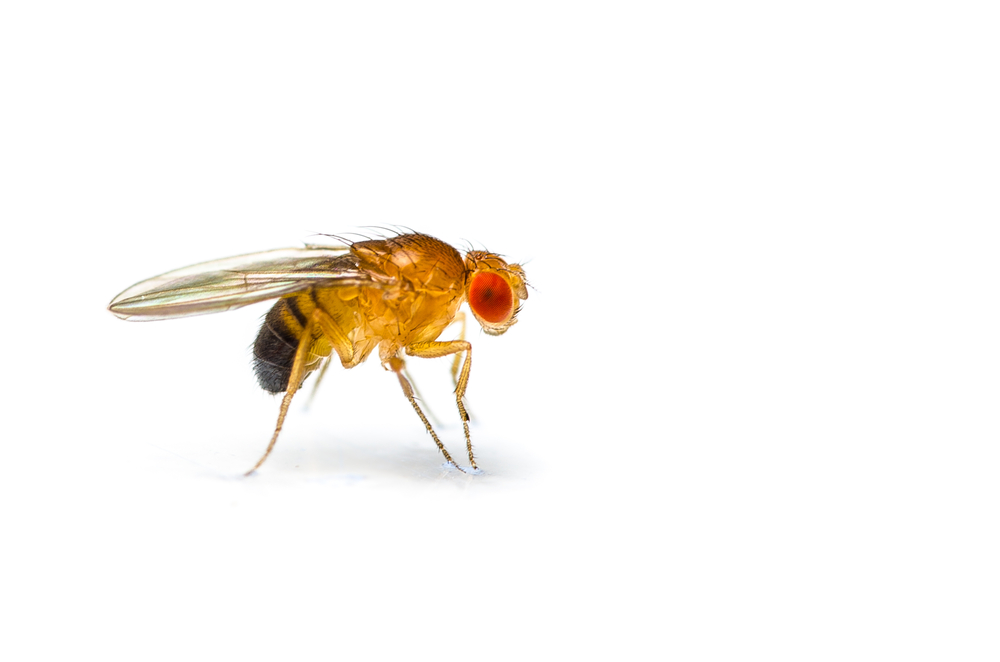Natural Kaempferol Delays Parkinson’s Symptoms in Fruit Fly Model

The natural compound kaempferol — which acts as a potent antioxidant — can reduce the physical and behavioral symptoms of Parkinson’s in a fruit fly model of the disease.
According to the researchers, this molecule may exert its protective effects by blocking the aggregation, or clumping, of a protein called alpha-synuclein, which is one key culprit behind Parkinson’s development.
The study, “Effect of kaempferol on the transgenic Drosophila model of Parkinson’s disease,” was published in the journal Nature Scientific Reports.
Parkinson’s disease is characterized by the loss of nerve cells that produce the neurotransmitter dopamine (dopaminergic neurons) in an area of the brain called the substantia nigra, and by the buildup of alpha-synuclein, which forms clumps known as Lewy bodies.
Oxidative stress also can lead to an inflammatory response that may contribute to disease progression. Of note, oxidative stress refers to an imbalance between the production of free radicals — natural byproducts of chemical processes, such as metabolism — and the ability of cells to detoxify them. These free radicals, or reactive oxygen species, are harmful and result in cellular damage and death.
Kaempferol is a natural chemical commonly found in plants and plant-based foods. It has been shown to protect against induced oxidative brain damage and reduce neuronal damage.
To investigate kaempferol as a potential Parkinson’s treatment, researchers at the Aligarh Muslim University, in India, tested its impact in a disease model using the fruit fly (Drosophila melanogaster).
The fruit fly model mimics Parkinson’s by producing human alpha-synuclein, which is abundant in people’s brains. Clusters of alpha-synuclein lead to the formation of Lewy bodies, the degeneration of dopaminergic neurons, and a loss of motor abilities.
Flies with and without Parkinson’s symptoms were fed food (in separate compartments) mixed with increasing doses of kaempferol (10, 20, 30, and 40 micromolar). The control flies were fed a diet without kaempferol, and one group of Parkinson’s flies were given L-dopa, which is sold as levodopa for human treatment. Naturally found in the body, levodopa eases Parkinson’s symptoms such as stiffness and slowness of movement. The flies were tested after 24 days of feeding.
A measure for general physical activity found a dose-dependent delay in the onset of the loss of activity in Parkinson’s flies treated with kaempferol or L-dopa, compared with those that were not treated.
Distortion in the flies’ compound eyes, which reflects damage to the eye retina observed in human patients, was found in untreated Parkinson’s flies. In contrast, no disorganization in the eyes was seen in the treated flies.
An almost 4-fold decrease in the climbing ability of the Parkinson’s flies was significantly delayed in treated flies; normal flies exposed to kaempferol showed no significant difference compared with unexposed controls.
Measuring the levels of thiobarbituric acid reactive substances, or TBARS, can indicate tissue damage caused by oxidative stress. Compared with the tissue from the control flies, the Parkinson’s flies showed a 3.5-fold increase in TBARS. Meanwhile, the flies treated with kaempferol showed a significant, dose-dependent decrease. Flies treated with L-dopa had similar TBARS as those treated with 10 micromolar kaempferol. Additional markers for oxidative stress showed that kaempferol treatment resulted in the same protective pattern.
Two protein markers for cell death, Caspase-3 and Caspase-9, also were measured. In the Parkinson’s flies, Caspase-3 activity levels were more than three times higher than control flies. A dose-dependent decrease in activity was found in the Parkinson’s flies exposed to kaempferol. The activity of Caspase-9 mirrored these results.
Three behavioral tests — the courtship index, the odor choice index, and a memory test — all showed a dose-dependent impact of kaempferol treatment in the Parkinson’s flies compared with the untreated flies.
The Parkinson’s flies also demonstrated a marked age-dependent reduction in the activity of tyrosine hydroxylase, an enzyme that generates L-dopa in human brains. Compared with untreated flies, higher levels of tyrosine hydroxylase were seen in brain tissue isolated from the treated flies.
The team found that kaempferol may be exerting its protective effects by binding directly to the alpha-synuclein protein, possibly blocking the formation of Lewy bodies. Because kaempferol is a potent antioxidant, the researchers also speculated that the “neuroprotection of the kaempferol is due to its antioxidant property.”
“Hence, it is concluded from our present study that kaempferol is also potent in reducing the [Parkinson’s disease] symptoms being mimicked in [Parkinson’s] flies and can be used as possible therapeutic agent against neurodegenerative disorders,” the researchers concluded.






